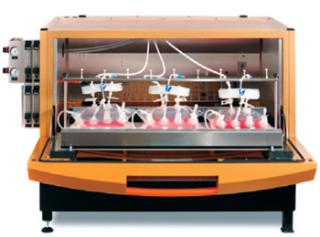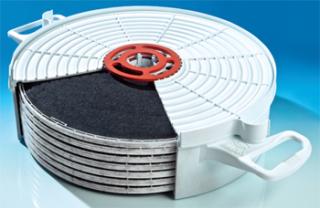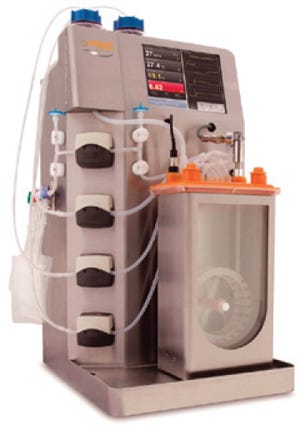Global Marketplace May 2011
May 1, 2011
Shaker–Incubator

Product: Multitron II system with shaker-bag option
Applications: Cultivation of mammalian, insect, or plant cells
Features: A Multitron II unit (50-mm orbit) with shaker-bag option enables 1- to 10-L cell cultures in disposable bags. Direct gassing of air or air–CO2 mix provides pH stability, and media temperature is controlled by air inside the incubator chamber. Up to three 2-L or two 10-L bags, or one 20-L bag from a number of manufacturers can be accommodated. The system also works for flasks after a slide-out tray exchange.
Contact ATR, Inc.
http://www.atrbiotech.comActivated Carbon Filters

Product: Stax AKS filter capsules
Applications: Clarification and prefiltration, scale-up, and downstream process development
Features: Stax disposable depth filter capsules incorporating Seitz AKS media streamline the activated-carbon filtration process in pharmaceutical manufacturing to a single step. This reduces overall process time, increasing product yield and making activated carbon processing easier to operate than it is in multistep operations. Stax AKS capsules offer flexibility in handling and are scalable in size and performance to meet laboratory, pilot, and process needs.
Contact Pall Life Sciences
http://www.pall.comSingle-Use Bioreactor

Product: PBS 3 single-use bioreactor
Applications: R&D and laboratory cell culture and development
Features: The PBS 3-L single-use bioreactor (first in a family of PBS products hitting the market this year) was designed by scientists for scientists. This plug-and-play bioreactor features patented Air Wheel technology that provides low shear, good mixing, a high mass-transfer rate, and ease of scalability from laboratory to production for biosimilars and a broad range of cell culture biologics. The 70-pound desktop unit has a working volume of 2–3 L and is designed for rapid set-up from inoculation to operation.
Contact: PBS Biotech, Inc.
http://www.pbsbiotech.comProduct Characterization
Service: Biopharmaceutical System Solution UPLC/MS analysis system
Applications: Proteins and peptides
Features: Waters’ solution for biopharmaceutical analysis incorporates an ACQUITY UPLC H-Class Bio system (with a bioinert flow path and quaternary solvent management with Auto•Blend Plus technology for bioseparation flexibility); peptide and protein separation columns (engineered to leverage the characteristics of biomolecules and QC-tested to ensure consistent results); and a Xevo G2 ToF mass spectrometer. UNIFI scientific information software controls the instruments and provides for data processing, mining, and reporting, with GxP laboratory compatibility.
Contact Waters Corporation
http://www.waters.comAssay Development
Product: SoPRano assay kit
Applications: Diagnostics and label-free screening
Features: Users of the SoPRano kit from PharmaDiagnostics can couple their own proteins to SoPRano gold nanoparticles to build and run their own custom assays. It requires no specialized equipment, offering the first high-throughput, label-free screening for standard plate readers. Previously available only as a service, the technology is a variant of surface plasmon resonance measurement. Kits are available for a range of applications, including fragment screening, antibody discovery, and measuring a range of ADME and physicochemical properties such as plasma protein binding, pKa, and redox potential.
Contact PharmaDiagnostics NV
http://www.pharmadiagnostics.comMicrobial Detection
Product: BD FACSMicroCount system
Applications: Quality control
Features: BD Biosciences and BD Diagnostics designed the FACSMicroCount flow cytometry system to help quality control laboratories rapidly screen raw materials as well as in-process and finished goods for microbial contamination. Previously known as the Micro PRO microbial detection system, this instrument screens for bacteria, yeast, mold, spirochetes, mycoplasma, and parasite cysts. It speeds and automates traditional methods, helping to shorten production cycles and save labor, inventory, and warehouse costs. Fluorescent dyes are used to detect, enumerate, and differentiate between live and dead organisms.
Contact BD Biosciences
You May Also Like





